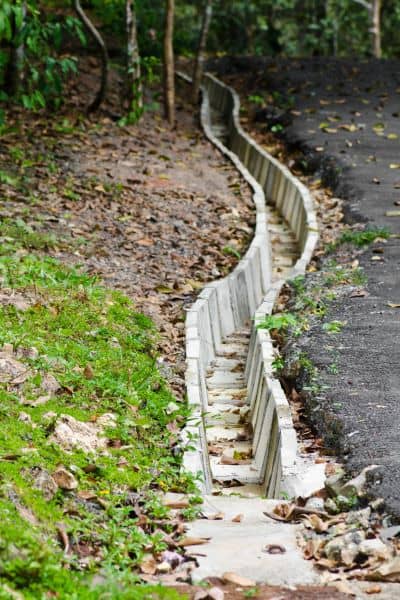
Grand Rapids is preparing to transform the long-closed Butterworth Landfill into a 2-megawatt solar project. Geotechnical engineering will be central to making it work. The plan covers six to ten acres and will use ballasted racks—heavy blocks that hold panels in place without digging into the ground. Construction must begin by June 2026 to qualify for federal tax credits.
At first glance, the concept seems simple: turn an unused site into a renewable energy hub. But building on a capped landfill is nothing like placing panels in an open field or parking lot.
Beneath the surface lies a layered mix of waste, fill, and protective cover that reacts unpredictably compared to typical soils. These conditions can shift, settle, or trap water in ways that standard sites never do.
The Landfill’s Past Shapes Its Future
The Butterworth Landfill once handled municipal waste for decades. By the late 20th century, it was full, and like many landfills, it was capped with soil and protective liners to contain contamination. The cap prevents water from seeping in, blocks harmful gases, and stabilizes the surface.
But what lies underneath is not uniform. Trash settles unevenly, decomposes at different rates, and produces gases. This means the ground is constantly moving, sometimes in small, hard-to-predict ways. For most developments, that would rule the site out. For solar, however, a non-intrusive system makes it possible—if the engineering is done right.
Settlement and Stability
Imagine laying a row of solar panels perfectly level. Now imagine part of the ground beneath them sinks by a few inches while another section barely moves. That’s the challenge engineers face. Uneven settlement can tilt panels, reduce energy output, or strain the racks holding them up.
Geotechnical engineers analyze how the landfill layers will compress over time. They look at historic settlement data, run models, and plan for adjustments. Solutions may include using racks that can be re-leveled, or designing for wider tolerances in tilt. Without this foresight, the project could quickly turn inefficient or unsafe.
Protecting the Cap
The landfill’s protective cap is like a seal. If it’s broken, it could release gases or let water inside, creating major environmental and regulatory issues. Traditional construction methods like drilling piles or pouring concrete footings are off-limits here. Even driving heavy trucks across the site can cause damage.
That’s why the city chose ballasted racking systems. These racks rely on weight, not penetration. They sit on top of the surface, held down by concrete blocks. But that choice shifts the burden to geotechnical planning: how much weight can the cap handle before it starts to deform? How can access roads be designed so equipment doesn’t crush the cover? These are questions geotechnical engineers must answer before the first panel is placed.
Stormwater and Drainage Design

Another challenge is water. Unlike open soil, a landfill cap is designed to shed rain, not absorb it. That means stormwater runs across the surface. If drainage is not planned carefully, water can pool around ballast blocks, cause erosion, or wash away protective layers. In winter, standing water can freeze, stressing racks and damaging surfaces.
Geotechnical and civil engineers work together on drainage design. They model runoff for both everyday storms and extreme downpours. Michigan’s changing climate means both are becoming more unpredictable. Creating swales, edge drains, or reinforced flow paths helps guide water away without breaking the landfill’s cover.
Wind and Uplift Pressures
Ballasted racks avoid penetrating the ground, but they face a different threat: wind. Panels act like sails, catching gusts that can lift entire rows if they aren’t anchored well. The answer is weight, but more weight increases stress on the landfill’s surface.
This balancing act requires precise geotechnical input. Engineers calculate wind loads based on site conditions, then design ballast blocks that are heavy enough to resist uplift but not so heavy that they damage the cap. Every block placement is a compromise between safety and protection.
The Role of Geotechnical Engineering
What ties these issues together—settlement, drainage, cap protection, and wind loads—is the science of soil and ground behavior. Geotechnical engineering is the discipline that studies how earth materials behave under stress. In a landfill, the “soil” is not natural soil at all but a layered mix of waste and fill. That makes testing and modeling even more important.
Geotechnical engineers guide every step of the project. They test materials, monitor settlement, design load paths, and help other specialists—like structural and environmental engineers—work within safe limits. Without them, the risks multiply quickly.
Lessons Beyond Butterworth
This landfill project may feel unique, but it points to a bigger trend. Across Michigan and the U.S., cities are reclaiming old landfills, industrial lots, and brownfields. These are often the only large open spaces left near urban centers. Turning them into solar fields, parks, or even new neighborhoods is attractive—but only possible with careful engineering.
The same geotechnical principles apply elsewhere. Before a subdivision can take shape or a detention pond can be sized, engineers depend on precise land measurements for engineering design to understand the site. That data becomes the foundation for flood studies where stormwater interacts with capped or compacted soils, and it guides roadway design in areas where the ground may shift over time.
For developers, the lesson is clear: the earlier geotechnical engineers are brought in, the smoother the project runs.
Why This Matters for Clients
For city leaders, developers, and contractors, geotechnical engineering isn’t just about safety. It’s about avoiding surprises that cost money and time. Here’s how it plays out:
- Risk management: Early soil studies prevent budget blowouts later.
- Regulatory compliance: Agencies like EGLE and the EPA demand strict protection on capped sites. Engineers help keep projects compliant.
- Meeting deadlines: With federal credits set to decline after 2026, delays can cut into profits. Sound geotechnical planning keeps construction on schedule.
Simply put, every dollar spent on geotechnical work upfront saves multiples down the line.
A Local Note on Timing
Civil projects don’t happen in isolation. At the same time Grand Rapids is planning this solar array, MDOT has launched major bridge repairs on I-196 and US-131. Traffic detours and limited access make logistics more complicated for any contractor working in the city. For construction managers, this shows why project management must always consider regional factors, not just the site itself.
From Landfill to Landmark
The Butterworth Landfill solar project is more than a renewable energy development. It’s proof that with the right expertise, even the most difficult land can be reused for good. Geotechnical engineering is what makes that possible, turning risks into manageable challenges and unlocking value from land once written off.
For Grand Rapids, the payoff will be a visible symbol of progress: clean power rising from a site once filled with waste. For developers and engineers, it’s a reminder that no project is too tough when you start with a solid foundation in geotechnical planning.